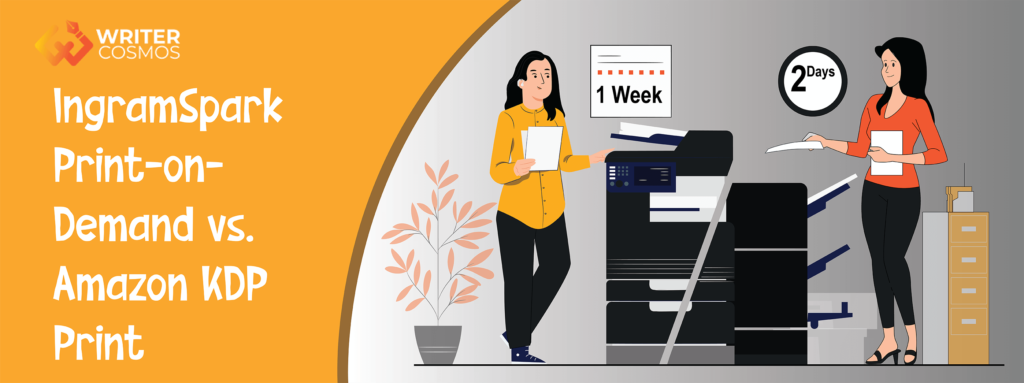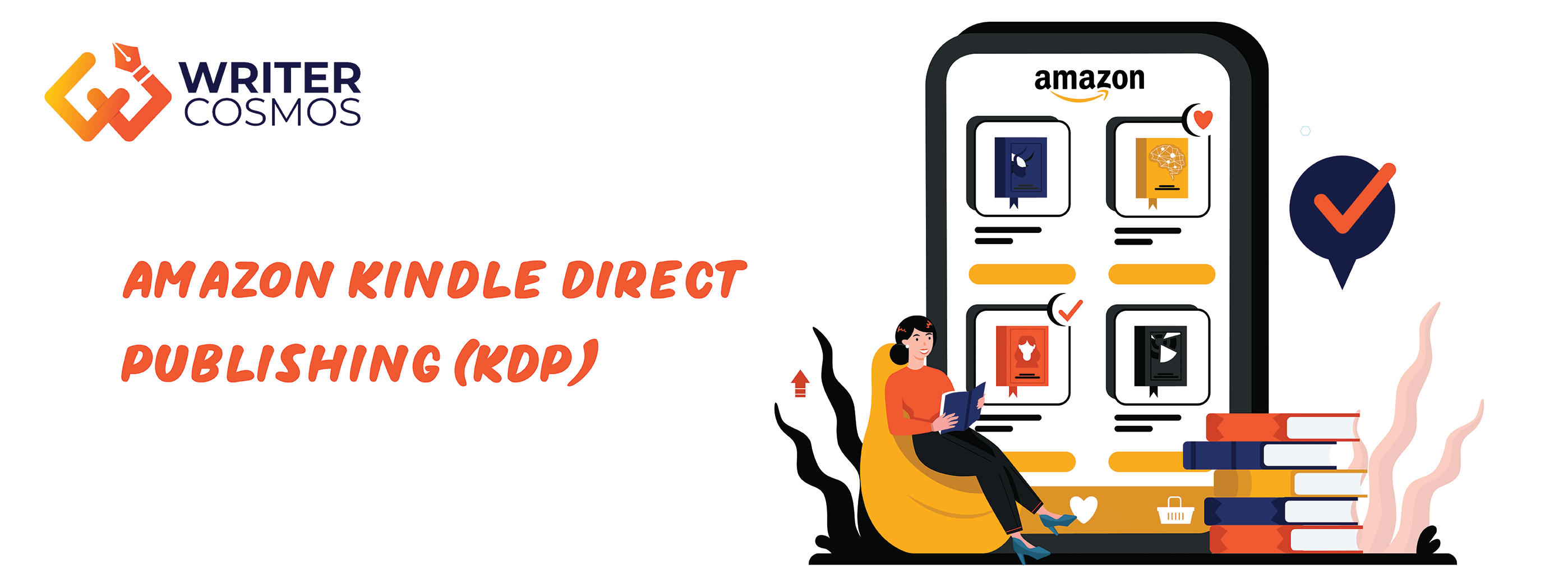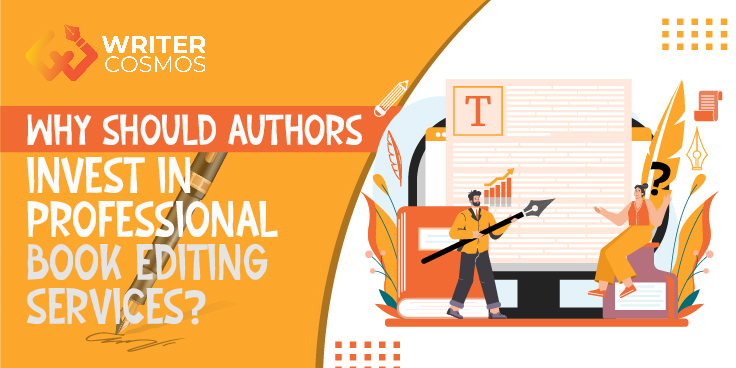IngramSpark Print-On-Demand Vs. Amazon KDP Print

Have you ever felt like book publishing is filled with one hurdle after another? Once you figure out the writing part, you’re faced with a plethora of options and even more costs to get your book into the hands of readers. We know this because we have been helping authors with book publishing for years.
You have written a book. Your book! And after months (or years!) of sweat and tears, you have finally ended this great project of your life. Because now comes the part writers only like a little: managing publication.
When publishing a book, a writer’s most important question is whether to self-publish or go with a traditional publisher. They say the best thing is to be a hybrid author, although that is another story. The only thing that is clear to us is that there is a moment of uncertainty when an author doubts whether to only publish on Amazon or try other platforms.
Two Ways To Self-Publish Paper Books
Printing a book allows the text to be linked to its continent and is helpful in certain circumstances. For example, paperwork is accessible to a specific audience not in the digital world, be it because of their age or for other reasons such as lack of connection, custom, social class, or seclusion. It is also a more effective way for some of our relatives to read the work, to sell it in a presentation, the author signs, or when we hold a raffle. In addition, the fact that our writing can be found on a library shelf, sold in physical bookstores, or raffled off implies a greater chance of being discovered.
Print-On-Demand Services For Self-Publishing Books
There are plenty of print-on-demand services, so how do you choose? These are some of the best services used by writers from all over the world. Take some notes, compare and contrast, and see which works best for your needs and preferences.
Why Choose Print-On-Demand Book Publishing?
One of the most prominent challenges authors face is managing their inventory. You may need a place to store hundreds or thousands of book copies. Shipping is another consideration: do you have the time and resources to ship the books after they are ordered without hurting your profit margins too much?
Some writers even face nightmare scenarios, such as book damage, poor print quality, or printing errors that make their books unsellable after all the time, energy, and expense invested in printing. Good self book publishing gets rid of these problems. You can print copies on Demand when self-published via Print, eliminating the need for extensive inventory storage. The self-publishing process also allows you to avoid working with a publisher. It is up to you when and how to create your books and how to market and sell them.
Amazon KDP (Kindle Direct Publishing)
With Amazon’s print-on-demand book service, you can publish and distribute paperback and digital books to customers worldwide. You can list your books for free on Amazon’s Kindle Store, though you’ll pay a commission on each sale. You can also request tests using Amazon’s KDP service. This allows you to minimize the risk of incorrect printing – you can fix problems before production. You pay printing costs plus shipping. You must use another POD service to print spiral-bound magazines or notebooks. But if you need paperback and digital books, Amazon’s print service should work fine and offer visibility in your markets.
IngramSpark
IngramSpark Print-on-demand is a self-publishing company that promotes print quality similar to that of books traditionally published through a major publisher. This desktop publishing service can create print books, eBooks, or both packages. Prices start at $49 per title for a print book, $25 for an eBook, or $49 for both. Like BookBaby, IngramSpark offers global distribution to thousands of libraries and retailers, including Amazon, Barnes & Noble, Apple, and Kobo. Within the platform, you can track and manage your sales and get reports in one place. The company’s website even offers a free calculator to help you predict your profit per book sold. This calculator looks at details like:
- Cut Size
- Link Type
- Laminated Type
- Color
- Page Number
- List Price
How To Decide Which Print-On-Demand Service?

For self-publishing, we would first prepare the electronic version of the manuscript and wait for the printed one to see how the work is working. If the ebook begins to be successful, a literary agent or a publisher will contact to propose a contract for its distribution in Print. If we see that this is not the case and that even some readers are interested in paper copies, we would consider creating physical copies. However, some types of texts sell better in Print than in digital, such as non-fiction (manuals, cookbooks, or coloring books), so the strategy above may not be appropriate in these cases.
If you have come this far because you are considering self-publishing your book, you are in the ideal place. Now, we explain everything you need to know about how to self-publish your book. Suppose you are already an entrepreneurial writer or pretend to be one. In that case, you know that sales depend on how you advertise, manage social networks, or collaborate with literary blogs or booktubers.
Amazon KDP Or IngramSpark Print-On-Demand Is Going To Hype Your Novel
This is all great for readers, but what does it benefit me as an author? Amazon will pay you for each page read in either of the two options. It is not a large sum, but if there is always someone with your book, you will earn some money little by little.
Print-On-Demand In The Publishing World
Print-on-demand (or POD) has come to revolutionize the world of books, and rightly so. But, despite being on everyone’s lips, only some know what it means or how it is currently implemented. So how is POD related to the distribution chain and the stock of books published and offered for sale in stores like Amazon and IngramSpark Print-On-Demand?
What Is The Significance Of Print-On-Demand?
As its name indicates, book printing on Demand is how a book is printed and sent to the customer after purchasing it through an online store or on request in physical stores. This means, neither more nor less, the following circuit:
- A person enters a store like Amazon online, for example, looking for and buying a book.
- Said sale generates an automated report that reaches the distributor, puts the book up for sale, prints it, and immediately sends it to the buyer.
POD Printing And Distribution Process
This scheme graphically illustrates the entire process of printing and e-distribution (as this system is called), from the beginning to the author’s earnings. This production mechanism is called 1:1, and, as mentioned in the previous scheme, it allows production to be individualized in runs as small as unique, that is, one book at a time.
Fundamental Aspects:
The fundamental aspects are improved printing techniques due to the rise of new technologies and digital formats.
1. Low printing costs
Thanks to digital printing, to the detriment of traditional offset printing (four inks, four passes by machines), to the drop in paper and printing costs, printers can print even shorter runs at competitive prices.
In the past, offset or four-color printing implied a long and laborious process that included printing/making a film (such as photo negatives) for each color to be printed (in the case that they were the four primary colors, CMYK). Then the editing process had to be corrected, and from “films,” they went to “printing on irons,” as they were called then. This inked plant (flat or with a roller, depending on the case) is the one that “stamps” the color on the paper. If the printing was color, one pass was made for each of the four necessary colors. Of course, this is a very elementary explanation. If you want to know more, here is a slide with the entire process.
2. There are no stock limits
As everyone knows, one of the issues in traditional distribution is related to logistics and stock control, one of the most complex aspects of all accounting processes. However, with Print on Demand, there is no stock control. As we said, in Print On Demand, it does not exist, or instead, it is different since what is managed is a file uploaded to a server that serves as the basis each time some buyer makes a firm order. This implies an infinite number of advantages.
3. Avoid large printing outlays
This is important, especially if we are talking about new writers or first novels whose recognition is still strong and whose sales path still needs to be discovered. This process guarantees a controlled investment of money.
4. New business, everyone happy
With its vast current implementation, this system has generated a new branch of business and opportunities for the co-publishing or self-publishing industry. Thanks to its level of integration between publishers – distributors/printers, and stores, the sector manages to capture sales that, on a global scale, move millions of euros each year. This has improved the experience for writers, who now have the chance to be published by serious co-publishing publishers with work characteristics similar to those of any conventional publisher.
5. Geographic mobility
One of the significant points of printing on Demand is that, since it is a file that moves through the network, it can be printed in any country in the world (that contemplates this technology) at local costs. In addition, it saves on transport, customs, abuse, and delays.
6. Network of print bookstores
The system is currently so established that many distributors work with local alliances. The operation is effortless: each associated bookstore in this network (in some cases, there are more than 5,000) is connected to a private system or intranet, which receives the data from each printer/distributor. Therefore, if you have published a book with this system, the distributor that works with your publisher will upload the files (previously validated so that everything goes well when printing) to the network of stores so that they can have it in their database. Anyone who wants to buy it online can do it without problems.
7. You do not need a legal deposit
According to the current Book Law, the editions of books distributed through POD can carry out the legal deposit process without carrying out the legal deposit process. Selling a book saves a lot of time, money, and energy since the deposit is made through digital files and not printed paper.
Since digital printing appeared as an alternative to offset printing, new terms associated with it emerged. Digital print, Print-On-Demand, and 1:1 distribution are related terms but not synonymous. Therefore, it is essential to distinguish what each denomination refers to and what it implies to use one or the other. The short explanation is as follows:
- Digital printing allows printing on Demand;
- Print-on-demand allows for 1:1 distribution but is not implicit in it;
- Print-on-demand can be done without 1:1 distribution;
- You can only do 1:1 distribution with print-on-demand.
For more details, read below to take advantage of these modalities to publish and sell your books.
Advantages Of Printing On Demand

- The speed in the execution of the work and, therefore, in the delivery times of the finished product;
- For certain books (such as text-only books), there is no difference in quality compared to offset printing;
- Allows customization and serialization through the use of variable data;
- It is a cheaper system for short runs;
- Allows you to sell the publication before producing it, making the costs associated with storage disappears;
- Enables 1:1 distribution.
How Many Copies Make Up A Short Print Run?
The number of copies will depend on the publication type (book, catalog, magazine, and brochure) and the number of pages it contains. This aspect must be evaluated in each job, paying attention to these characteristics. In addition, it should be considered what formats and materials are to be used in producing books since digital printing is only suitable for some of them. For the book publishing industry, print-on-demand offers the following benefits for publishers:
- Monetize back-end titles and those that are out of the catalog;
- Manage shorter printing deadlines;
- Reduce printing costs (let’s remember that traditional publishers make increasingly shorter Print runs) and storage costs;
- Avoid the management and breakage of stock;
- Make new prints with errata corrected;
- Publish new, revised, and updated editions of a few copies;
- Eliminate book returns.
- For an author who publishes on his account, the impression is low.
To Amazon Or IngramSpark Print-on-demand? This Is The Dilemma.
Is there life beyond the giant that crushes everything? It would be nice if there were some alternative options. Also, there is another reason: those who buy your book on Amazon are and will continue to be Amazon customers, not yours. Getting their email to establish a relationship with them and make yourself known can be challenging.
IngramSpark
IngramSpark Print-on-demand is part of the Ingram group, which is another giant. It is the largest book distribution company in the world.
Amazon itself relies on Ingram for the widespread distribution of its books. They have been in the book business for many years. It shows for the better (capillary distribution, reasonable prices, many format options) and the worse (they squeeze more money from the poor author than the other options presented here).
Pros:
- Ingramspark has more distribution capacity for in-store print books. In the end, it is their primary activity.
- If you want your book sold in stores, you can increase the chances that stores will buy it by opting into Ingramspark’s book return option.
- Print quality may be slightly better than Amazon/Kindle Direct Publishing.
- Its printing and distribution costs are lower than KDP’s.
- Color printing is cheaper than KDP (half the price or less).
- You can publish hardcover books – with KDP, it’s not possible yet, although everything indicates that it will soon be.
- IngramSpark allows your book to be purchased in physical bookstores in more countries than KDP and in more formats.
- The expanded distribution offered by KDP is through IngramSpark, but with fewer discount options.
- If you use your ISBN, you will benefit from having your mark in all the databases.
Cons:
- They charge you an annual fee, they charge you to upload a book, and they also charge you for any modification you make to your text. They are the most expensive.
- If you want to avoid your book being in every bookstore, you may not need IngramSpark. However, if your primary goal is bookstores, IngramSpark may be better than Amazon KDP.
Amazon Kindle Direct Publishing (KDP)

Kindle Direct Publishing (KDP) is Amazon’s platform that allows you to self-publish on Amazon. Before that, there was Createspace, a disappearing platform – and KDP works better.
Pros:
- KDP is the cheapest of all the options, especially if you plan to print in black and white. If you want to publish your book in color, the prices skyrocket, and it is no longer an attractive option.
- The quality of KDP is different from that of Ingramspark.
- Fast delivery times. Ultimately, Amazon has this advantage, and no one beats it in speed.
- You can preview a simulation of how your book would look on the screen, both the content and the cover.
- The process of uploading the book + cover files is relatively simple.
- Amazon has more than 40% of the market share of the e-commerce sector, and in the United States, it sells more than 40% of all paperback books – being a giant steamroller has its advantages.
Cons:
- You will never have clients. Those who buy your books are still Amazon customers. You may know someone has bought a book from you, but you will never know who.
- You can only sell through Amazon, never from your website (unless you buy a batch of your books and store them somewhere, and then you take charge of packing and taking each book to the Post Office to send it to the buyer).
- Different printers may print your book, so the quality may vary from Print to Print.
- Before, you could buy an ISBN for $10. You are now forced to choose between a KDP ISBN or an ISBN purchased by you. If you use Amazon’s free ISBN, the distributor of your book will be Amazon. Therefore you cannot sell your book (with that same ISBN) on other platforms.
- KDP Expanded Distribution is only available if you use an Amazon ISBN. It is advisable to buy your ISBN.
- KDP offers its expanded distribution through IngramSpark, without giving the same discount options that Ingramspark offers.
The good news is that there are exciting alternatives. The bad news is that Amazon is still the most comfortable and straightforward option. Still, we are optimistic: things are about to change and other possibilities are taking shape and will soon become a reality.
Tips For Writers Who Want To Self-Publish On Amazon KDP
If you’re going to start publishing works on this platform, we have some tips for you to take into account and have a better experience on Amazon KDP.
Hire a professional file converter: On many occasions, traditional converters have errors, and that would affect all the work you have done for months. We recommend hiring a professional from WriterCosmos to avoid problems with the file.
Associate the digital edition and the paper edition: When you make online editions of your work, the right thing to do is to associate your eBooks with the paper edition. Usually, Amazon does it automatically, but if it doesn’t do it in your case, you should report it.
Promote your product from your networks: Starting on Amazon KDP, you may need more recognition for your work to be among the most searched. For this reason, we recommend you place links to your eBook’s sales page and advertise it. From your networks, you can get more attention from people and generate more sales.
Make an introduction that generates curiosity: You should remember that Amazon shows about 10% of the work for free. For this reason, the ideal would be to call the reader’s attention to the first pages. With an attractive introduction, the buyer will likely want to continue reading and buy your work.
Interact with your readers: You can include links at the beginning or end of your works, which direct your readers to groups or social networks. This way, you can share new titles and complete details of your upcoming works with them. It is an excellent way to inform your clients of your upcoming jobs.
At the moment, these are all the advantages and disadvantages that we find in this free editorial distribution system.
Conclusion:
The publisher, who has taken too long to sell his first edition, needs to be compensated by bringing out a new edition of the book, and consequently, the book is discontinued and lost forever. Print on Demand is a file hosted in the database of many bookstores, and since it can be drip-printed, it will be a title that will never be lost.
Well, a book offered for sale with this system can compete in PVP with any book sold traditionally. It is not negligible. A few years ago, this was unthinkable. In short, the entire print-on-demand process could be summed up like this: sell more books, to more readers, in more destinations, in less time, and at a lower cost.
Have you published on Amazon KDP? What has been your experience with IngramSpark Print-on-Demand? Connect with us for book publication services.
Categories
Table of Contents
Related Posts






